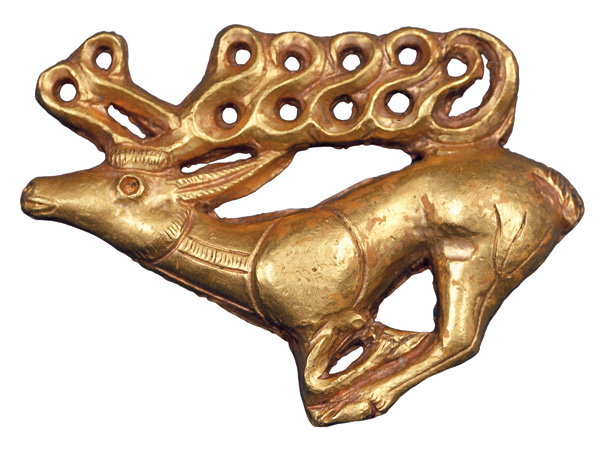
Frozen in mid-gallop, with undulating antlers that seem caught in the wind, this intricately carved golden stag plaque displays the impressive workmanship of a people known to history, ironically, as barbarians—the Scythians (seventh century B.C.-first century A.D.) Herodotus, in one of the few written descriptions of the tribe, told of their penchant for scalping their victims and sometimes sewing coats out of the scalps; blinding their slaves; drinking the blood of their victims; practicing human sacrifice and smoking marijuana. Nomads and accomplished equestrians who were among the first to tame horses and wear trousers, the Scythians preferred to chase game rather than engage in battle; they were, however, fierce warriors when the need arose. They ranged widely from an area north of the Black Sea from the Carpathian mountains to Mongolia, including the Eurasian steppe of what is now Kazakhstan and southern Russia, and at one time, according to Herodotus, they “occupied the whole of Asia” (Histories 1:103-105). The Holy Land was no stranger to the Scythians either; Herodotus tells us they sacked the Philistine city of Ashkelon in the fifth century B.C.
Already a library member? Log in here.
Institution user? Log in with your IP address.

